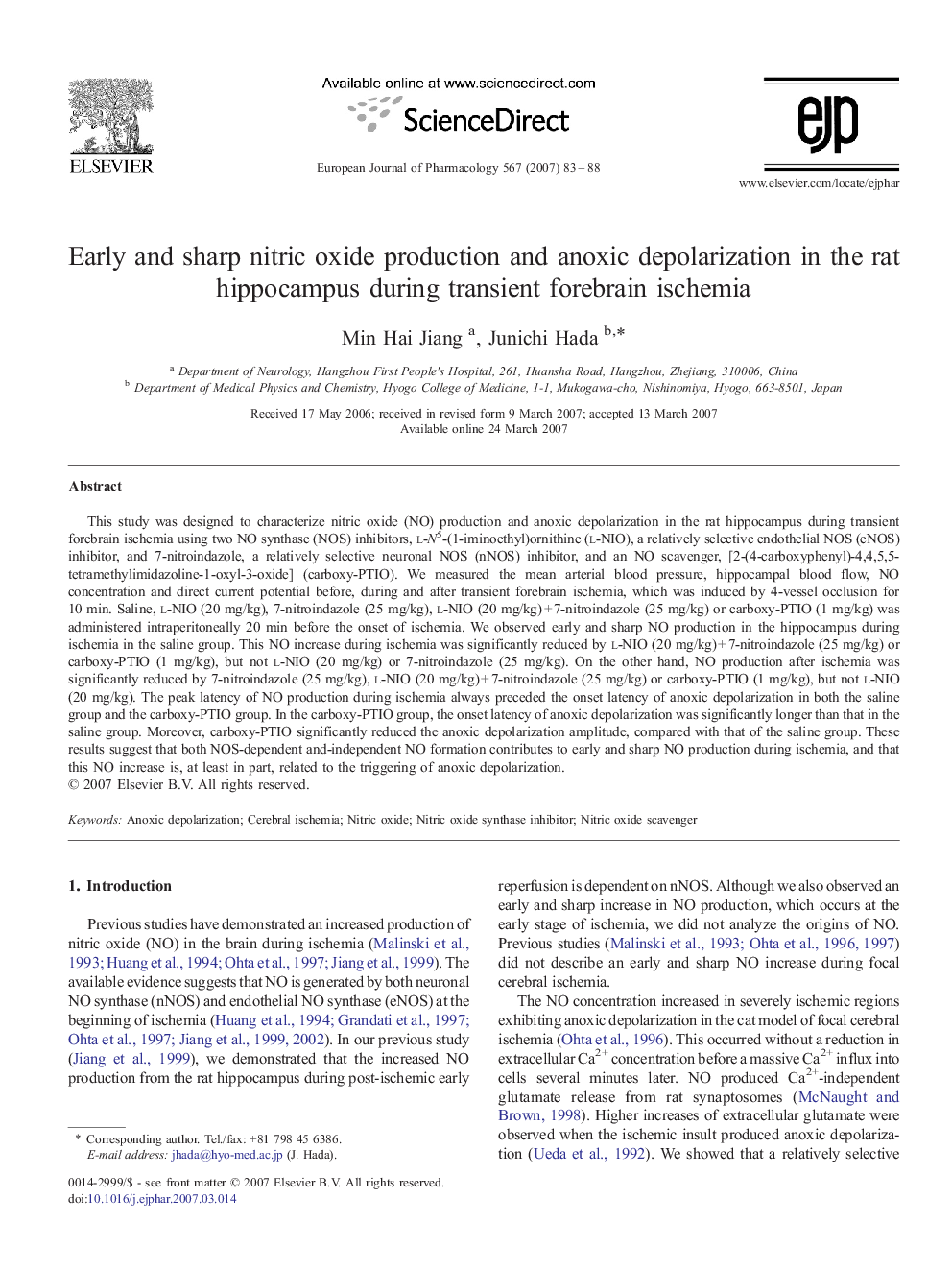| Article ID | Journal | Published Year | Pages | File Type |
|---|---|---|---|---|
| 2536110 | European Journal of Pharmacology | 2007 | 6 Pages |
Abstract
This study was designed to characterize nitric oxide (NO) production and anoxic depolarization in the rat hippocampus during transient forebrain ischemia using two NO synthase (NOS) inhibitors, l-N5-(1-iminoethyl)ornithine (l-NIO), a relatively selective endothelial NOS (eNOS) inhibitor, and 7-nitroindazole, a relatively selective neuronal NOS (nNOS) inhibitor, and an NO scavenger, [2-(4-carboxyphenyl)-4,4,5,5-tetramethylimidazoline-1-oxyl-3-oxide] (carboxy-PTIO). We measured the mean arterial blood pressure, hippocampal blood flow, NO concentration and direct current potential before, during and after transient forebrain ischemia, which was induced by 4-vessel occlusion for 10Â min. Saline, l-NIO (20Â mg/kg), 7-nitroindazole (25Â mg/kg), l-NIO (20Â mg/kg)Â +Â 7-nitroindazole (25Â mg/kg) or carboxy-PTIO (1Â mg/kg) was administered intraperitoneally 20Â min before the onset of ischemia. We observed early and sharp NO production in the hippocampus during ischemia in the saline group. This NO increase during ischemia was significantly reduced by l-NIO (20Â mg/kg)Â +Â 7-nitroindazole (25Â mg/kg) or carboxy-PTIO (1Â mg/kg), but not l-NIO (20Â mg/kg) or 7-nitroindazole (25Â mg/kg). On the other hand, NO production after ischemia was significantly reduced by 7-nitroindazole (25Â mg/kg), l-NIO (20Â mg/kg)Â +Â 7-nitroindazole (25Â mg/kg) or carboxy-PTIO (1Â mg/kg), but not l-NIO (20Â mg/kg). The peak latency of NO production during ischemia always preceded the onset latency of anoxic depolarization in both the saline group and the carboxy-PTIO group. In the carboxy-PTIO group, the onset latency of anoxic depolarization was significantly longer than that in the saline group. Moreover, carboxy-PTIO significantly reduced the anoxic depolarization amplitude, compared with that of the saline group. These results suggest that both NOS-dependent and-independent NO formation contributes to early and sharp NO production during ischemia, and that this NO increase is, at least in part, related to the triggering of anoxic depolarization.
Keywords
Related Topics
Life Sciences
Neuroscience
Cellular and Molecular Neuroscience
Authors
Min Hai Jiang, Junichi Hada,
